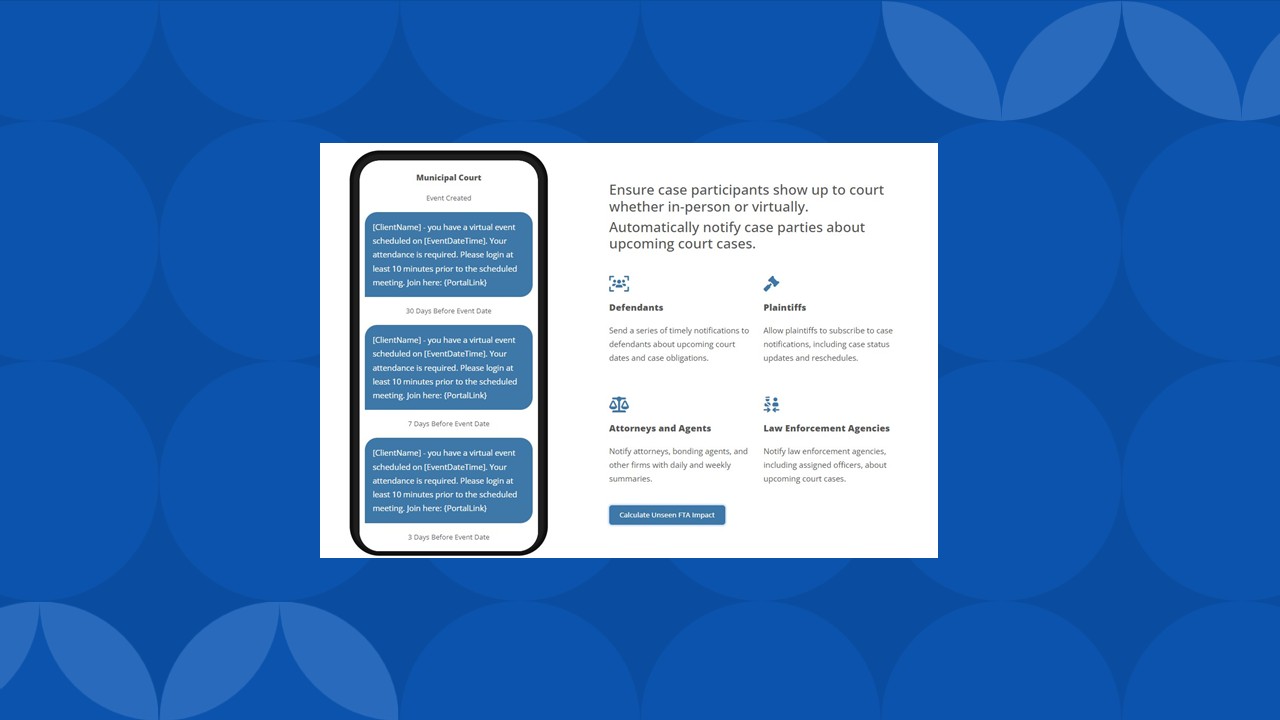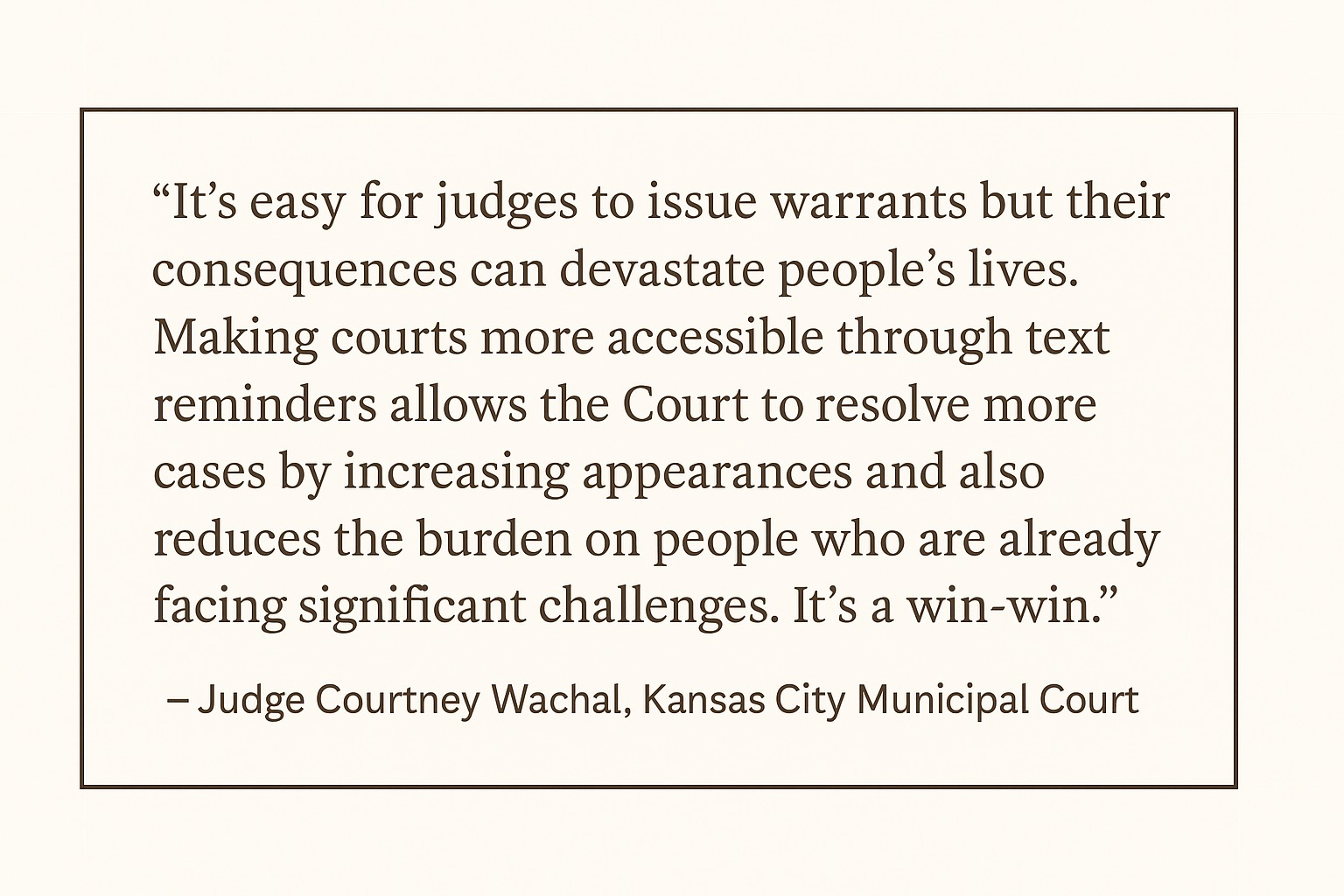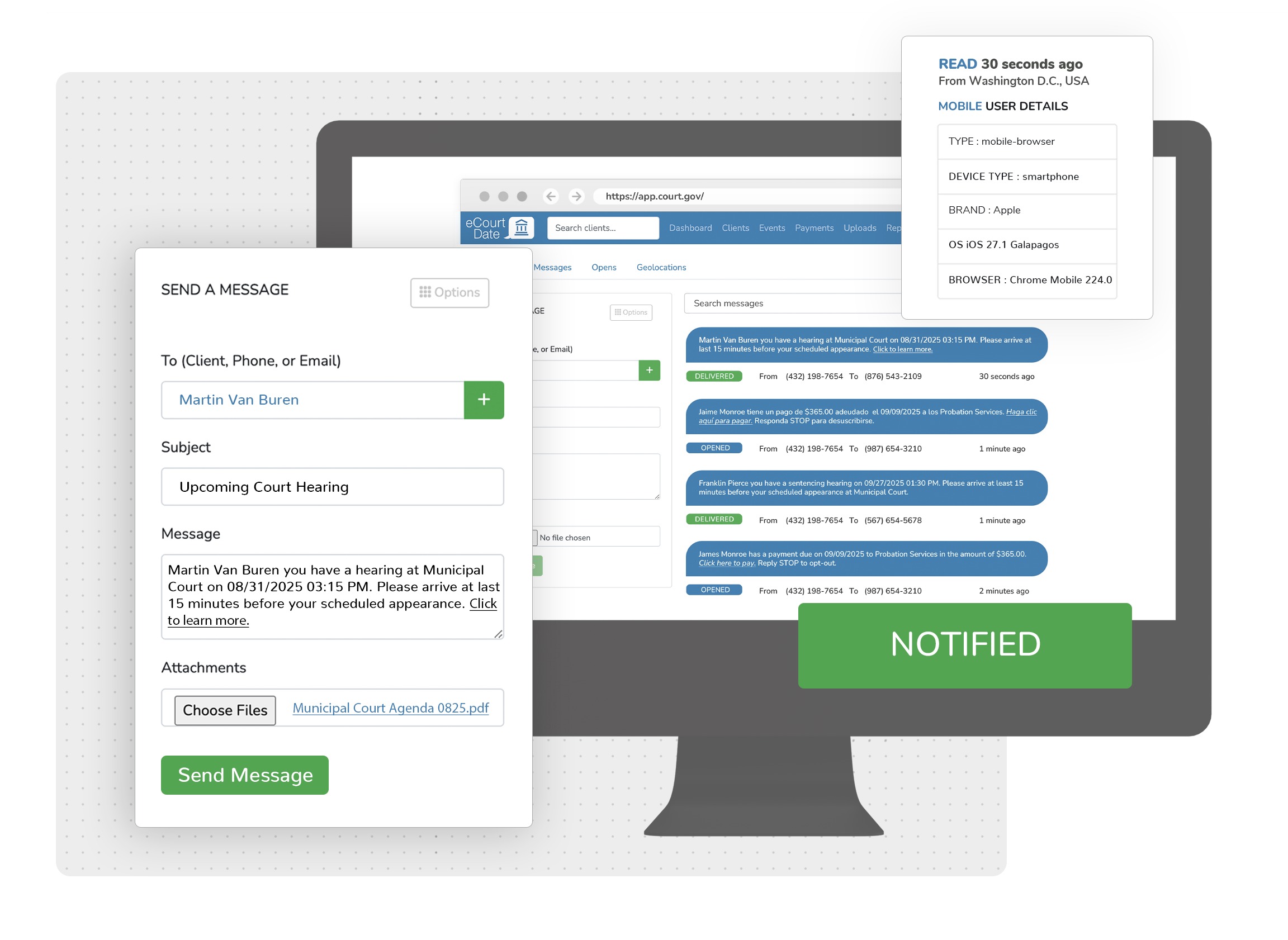The American court system is one of the most complex institutions in our democracy. Courts involve law enforcement, prosecutors, defense attorneys, clerks, judges, community organizations, and most importantly, the people navigating the system. With so many players and processes, the idea of fixing the courts all at once is overwhelming and unrealistic.
But here is the good news: change does not always have to come through massive transformations. Sometimes the most meaningful improvements begin with something small, practical, and doable.
Why Notifications Matter
Today, there is a national debate over pretrial bail. Some states have moved to limit or eliminate cash bail, while others continue to use it widely. That debate is essential, but it remains highly divided and difficult to resolve at a national or even state level.
Meanwhile, courtrooms across the country face the same daily challenge: people need to show up. No matter how someone is released, whether on bond, on recognizance, through a pretrial program, or with supervision conditions, they still have a court date. If they do not appear, the system slows down, costs rise, and lives are disrupted.
This is not only an issue for defendants. When victims or witnesses miss court, cases can fall apart. When law enforcement or attorneys fail to show up, dockets come to a standstill. Essentially, court attendance is about ensuring the whole process keeps moving.
That is where notifications come in.
A Simple Step with Evidence
Sending court reminders via text, phone, or email is one of the simplest tools a jurisdiction can use. It does not require rewriting laws or overhauling the entire pretrial process. It also does not need expensive new facilities or an extra layer of bureaucracy. It is a straightforward communication method that engages people where they are.
And the data supports this. A 2025 guide from ideas42 shows that reminder systems can cut missed court appearances by up to 40 percent while saving jurisdictions about $1,500 per case (Fishbane, McAuliffe, & Li, 2025). When you multiply that across thousands of cases, the impact is enormous: fewer warrants issued, fewer unnecessary jail bookings, and smoother case processing.
Notably, the guide highlights eCourtDate as one of the solutions jurisdictions can adopt to put these practices into action (ideas42 & Pew Charitable Trusts, 2025).
The benefits extend beyond just numbers. As Judge Courtney Wachal of the Kansas City Municipal Court explained: "It's easy for judges to issue warrants, but their consequences can devastate people's lives. Making courts more accessible through text reminders allows the Court to resolve more cases by increasing appearances and also reduces the burden on people who are already facing significant challenges. It's a win-win." (Fishbane, McAuliffe, & Li, 2025, p. v)
Practical and Fair
Reminders are not a perfect fix for every issue, but they help with one of the most common reasons people miss court: life gets in the way. Just as we rely on reminders for doctor's appointments, school events, or work meetings, individuals facing court dates also benefit from this same level of support.
Importantly, this is not about changing case outcomes. It is about giving people the opportunity to participate, be heard, and advance their case. Courts that implement reminders are not lowering standards or bending rules; they are creating conditions where the system functions as intended.
One Bite at a Time
We cannot overhaul the entire court system with a single action. The obstacles are too significant, and too many stakeholders are involved. However, we can take meaningful steps that improve the system's efficiency for everyone. Notifications are one of those steps.
They do not settle the debate over bail. They do not address every issue within the justice system. But they do ensure that, no matter how someone is released, they get clear, timely information that helps them show up for court.
We might not be able to do everything all at once, but we can accomplish something today. Sending reminders is a simple, proven step forward, and little by little, those steps add up.
As the ideas42 and Pew guide makes clear, solutions like eCourtDate are already available to help courts put effective reminder systems into practice. eCourtDate is built to support jurisdictions with automated notifications, modern communication tools, and proven results that reduce missed appearances. The tools exist, the data supports them, and the opportunity is here.
If your court is ready to take that first step, eCourtDate can help.
Reference
Fishbane, A., McAuliffe, S., & Li, Y. (2025). Improving court attendance: The essential guide to court reminder programs. ideas42.

About Greg Shugart
Director of Government Relations
Greg Shugart brings over 30 years of public sector experience to the eCourtDate team, with a background in court administration, criminal justice reform, and government operations. He previously served as Criminal Courts Administrator for Tarrant County, Texas, where he led statewide-recognized initiatives in pretrial modernization, court communications, and system efficiency. Greg now contributes to eCourtDate’s strategy and partnerships, helping agencies implement technology that improves access, compliance, and trust in the justice system.


